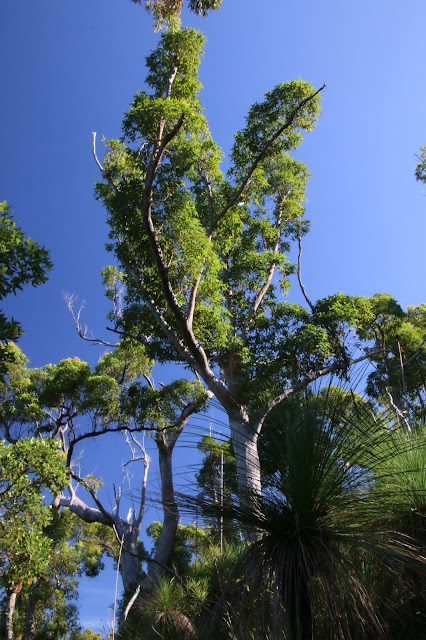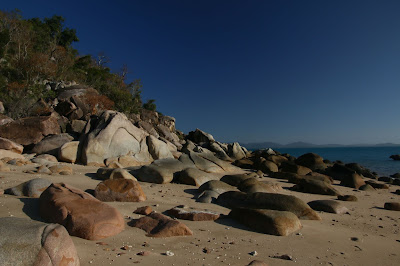This morning we explored Swamp Bay and climbed Mt Rooper in Conway National Park.
https://www.tourismwhitsundays.com.au/mount-rooper-circuit-and-swamp-bay-track https://parks.des.qld.gov.au/parks/conway/about.html
This took us through a diverse variety of vegetation types – swampy mangroves, gum trees, grass trees and rainforest. There is a lot of dead wood on the ground. The gum trees on the Shute Harbour side of Mt Rooper have mainly survived, though with an unusual appearance. It looks as if all the leaves and smaller branches were removed in the cyclone and now the leaves are sprouting directly from the larger branches and trunks that remained.
One of the things I have been surprised by is the variety of beach surfaces, sometimes multiple types all on one beach. Swamp Bay beach has bands of rounded fist sized rocks, sand, coarse sand and coral all along the one beach.
After exploring Swamp Bay, we headed up Mt Rooper, to be treated with stunning views over the Whitsunday Islands. Here, we stopped for morning tea and chatted to two lovely ladies we met yesterday at parkrun. One of them had been working on Daydream Island when it was hit by Cyclone Debbie and talked to us about the seeming randomness of the pattern of damage, as we have observed in exploring the area. The morning after the cyclone one of the signs from Whitsunday Island washed ashore on Daydream Island – what a powerful ocean! There is still much damage visible around the area.
 |
| Leaf regrowth after the destruction of Cyclone Debbie |
After a long lazy lunch and an afternoon nap I returned to the Honeyeater Lookout as a trail run. This time there were no clouds enclosing the lookout and I could see Abell Point Marina, some of the Whitsunday Islands and well out to sea. Hayden and I enjoyed an evening swim before dinner.

























































